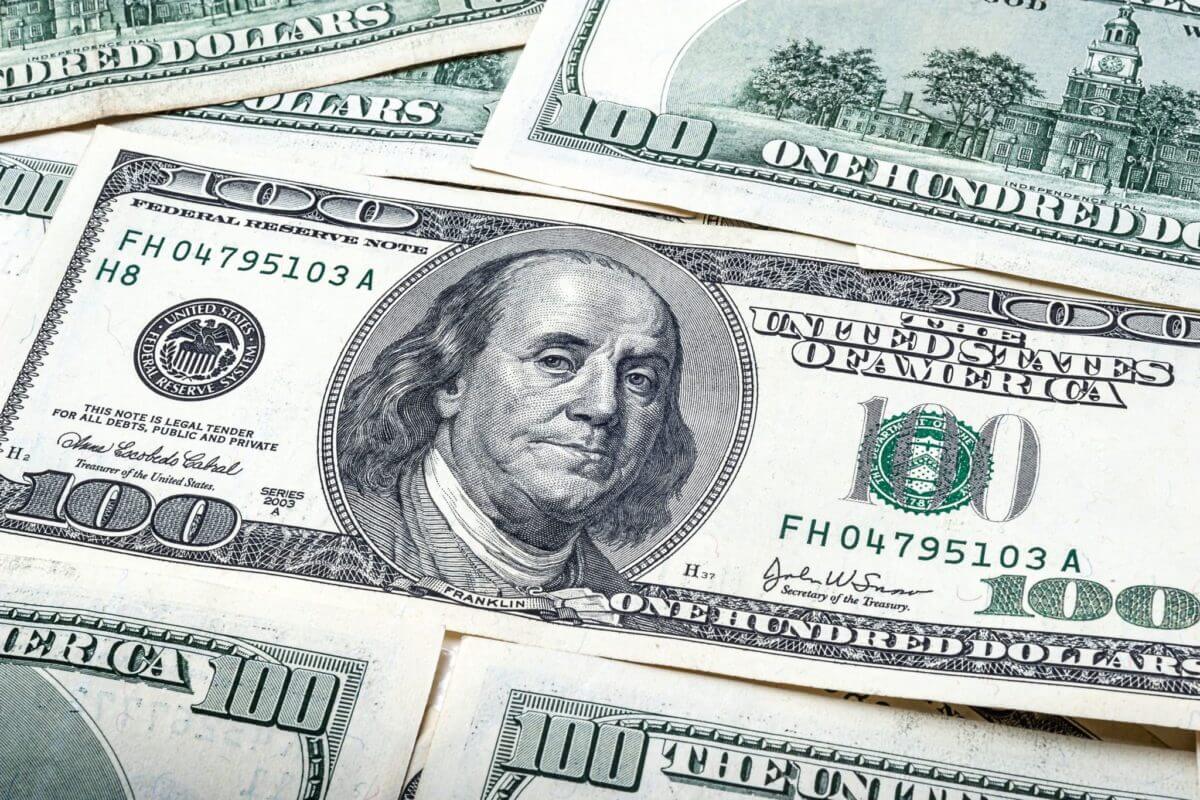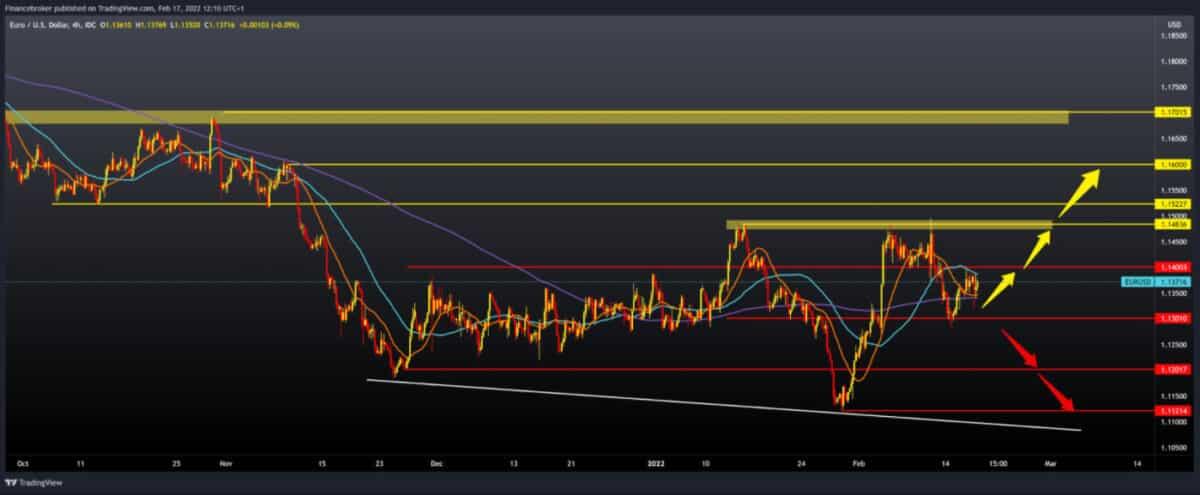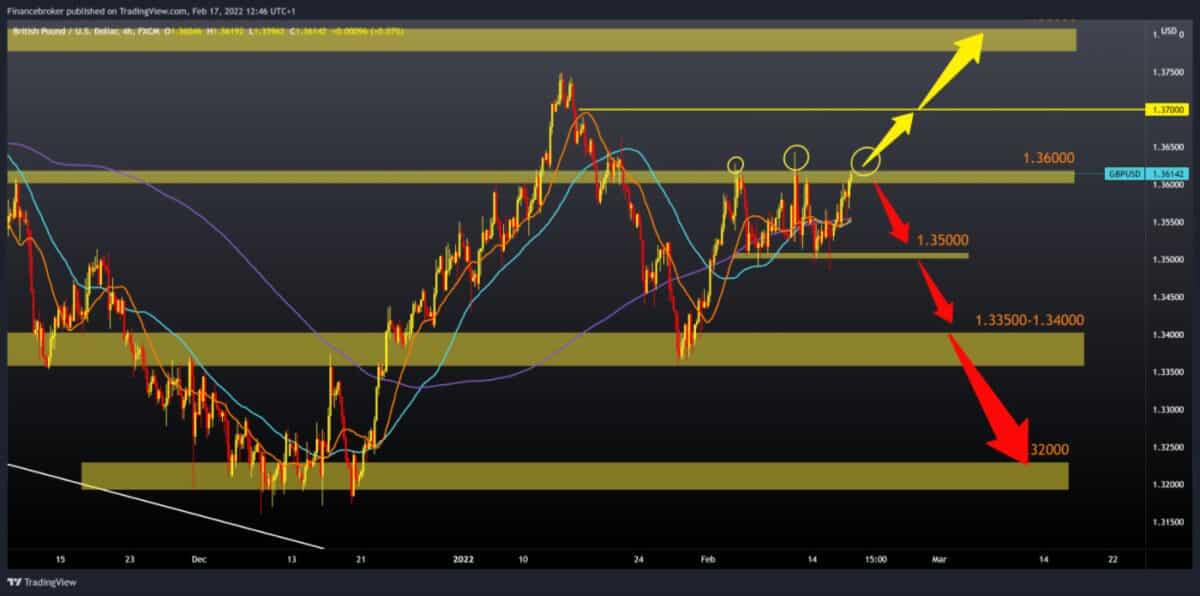
EURUSD and GBPUSD chart view
EURUSD chart analysis
During the Asian session, the euro strengthened against the dollar after a large withdrawal from yesterday. “Risk-on” and “risk-off” sentiment change. Notes from the last meeting of the US Federal Reserve showed last night that the Monetary Board did not consider the possibility of increasing the reference interest rate by half a percent in March, which was (was) bad for the dollar. On the other hand, the military-security situation around Ukraine is still on the verge of escalating. News is coming that there was rocket activity in the far east of Ukraine. Now, the euro is being exchanged for 1.13700 dollars, weakening the common European currency by 0.01% since the beginning of trading tonight.
Bullish scenario:
- The EURUSD pair needs to stay above 1.13500, and with a positive consolidation break above 1.14000, our the previous resistance zone.
- If the pair breaks above 1.14000, then we get additional support in the MA20, MA50, and MA200 moving average.
- Our next resistance zone is 1.14850-115200, which we managed to overcome in the previous three attempts.
- The break above would open the next target at 1.16000, high from November, and after it 1.17000 level.
Bearish scenario:
- We need a negative consolidation and withdrawal of EURUSD below moving averages and 1.13500.
- After that, we are looking for the first support at 1.13000, the support zone from the beginning of the week.
- A break below this support would direct EURUSD to the previous low from the end of January at 1.11200, and we can look for some inter-support at 1.12500.

ECB news
The European Central Bank was right to keep its easy-money policy because inflation should fall after a “temporary increase” due to supply disruptions that could extend to next year, officials from the International Monetary Fund said today. The International Monetary Fund said earlier data indicated that wages in the eurozone would rise but modestly and that inflation, which reached 5.1 percent last month, would fall below the ECB’s 2 percent target. Lagarde reiterated on Monday that any change in the ECB’s ultra-light policy of massive bond purchases and negative interest rates will be gradual. She failed to convince investors, who still expect interest rates to rise by 50 base points by the end of the year.
GBPUSD chart analysis
The GBPUSD pair managed to pull out of consolidation around 1,35500 and he is now climbed to 1,36150. This is now our third attempt to make a new February high above 1,36500. We still hope that the pound will manage to climb to 1.37000-1.37500 and break out of the clutches of the dollar.
Bullish scenario:
- We need a continuation of the currently positive consolidation and a break above 1,36500, with the support in moving averages.
- Our first target is a 1.37000 peak from January 17, and the next higher resistance we can expect at 1.37500, this year’s peak from January 13.
- A big success for the pound would be growing to a large resistance zone at 1,38000 in October last year.
Bearish scenario:
- We need a new negative consolidation and a retreat below 1.36000.
- After that, we look at the previous support zone at 1.35000-1.35500.
- Potential additional support is our moving averages, and a break below them would increase bearish pressure that could further lower GBPUSD well below 1.35000.
- If that happens, the next support awaits us in zone 1.33500-1.34000 from January.
- If the increased bearish pressure continues, then we are likely to visit the December support zone around 1.32000.

-
Support
-
Platform
-
Spread
-
Trading Instrument




